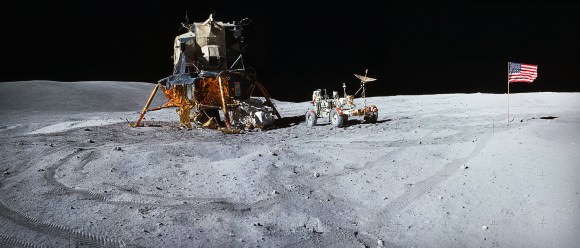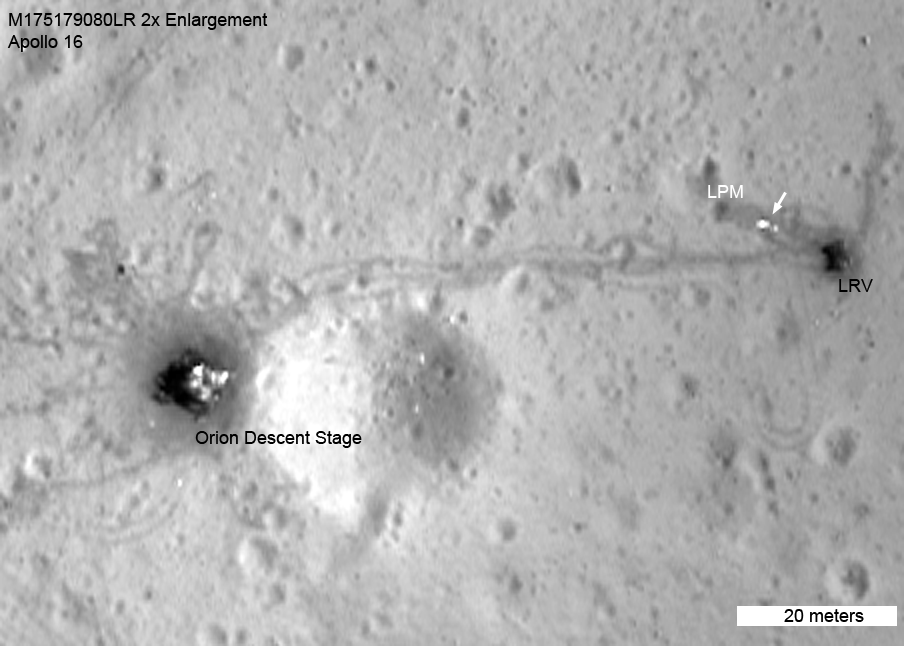NASA’s Lunar Reconnaissance Orbiter (LRO) made a low pass over the Apollo 16 site last fall, capturing images of the leftovers from John Young and Charlie Duke’s 1972 exploration of the Descartes Highlands. The video above takes us on a tour of the Apollo 16 site from lunar orbit, and includes audio from the original communications and some very nice comparative photos and video clips showing the same features from ground level.
The goal of Apollo 16 was to explore for the first time a lunar highlands location, and collect samples of what were initially thought to be volcanic rocks. The rocks were believed to be of a different material than what was collected during previous missions.
As it turned out, the rocks collected by Duke and Young weren’t volcanic in origin at all; they ended up being breccias — cemented-together chunks ejected from ancient cratering events hundreds of miles away.
Apollo 16 also set up various experiment packages to study lunar geology, magnetism and the solar wind. The Lunar Roving Vehicle (LRV) allowed Young and Duke to travel across a much wider area than they would have otherwise been able to on foot. It was the second mission to use an LRV, and the rover — as well as its tracks — are still there today, looking exactly as they did when they were left 40 years ago.
[/caption]
The Apollo 16 ascent stage lifted off from the lunar surface on the evening of April 23, 1972 and docked with the Command Module containing Ken Mattingly. The following day the astronauts began their trip back to Earth, completing the 250,000-mile traverse three days later on April 27.
The Moon would be visited again in December of that same year during Apollo 17, the last mission of the program and the last time that humans would walk on the surface of another world. Now, 40 years later, satellites orbiting the Moon take pictures of what was left behind by these historic events. Perhaps someday soon the sites will be visited from ground level… maybe even by a new generation of astronauts.

Read more about this on Arizona State University’s LROC site, and explore the full-frame Narrow-Angle Camera image from the LROC here.
Video: NASA/GSFC/Arizona State University

